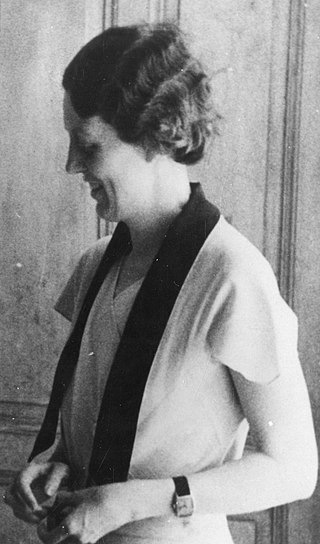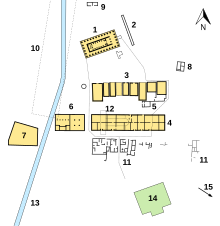Panhellenic Games is the collective term for four separate religious festivals held in ancient Greece that became especially well known for the athletic competitions they included. The four festivals were: the Olympic Games, which were held at Olympia in honor of Zeus; the Pythian Games, which took place in Delphi and honored Apollo; the Nemean Games, occurring at Nemea and also honoring Zeus; and, finally, the Isthmian Games set in Isthmia and held in honor of Poseidon. The places at which these games were held were considered to be "the four great panhellenic sanctuaries." Each of these Games took place in turn every four years, starting with the Olympics. Along with the fame and notoriety of winning the ancient Games, the athletes earned different crowns of leaves from the different Games. From the Olympics, the victor won an olive wreath, from the Pythian Games a laurel wreath, from the Nemean Games a crown of wild celery leaves, and from the Isthmian Games a crown of pine.

The Nemean Games were one of the four Panhellenic Games of Ancient Greece, and were held at Nemea every two years.

The ancient Agora of Athens is the best-known example of an ancient Greek agora, located to the northwest of the Acropolis and bounded on the south by the hill of the Areopagus and on the west by the hill known as the Agoraios Kolonos, also called Market Hill. The Agora's initial use was for a commercial, assembly, or residential gathering place.

Nemea is an ancient site in the northeastern part of the Peloponnese, in Greece. Formerly part of the territory of Cleonae in ancient Argolis, it is today situated in the regional unit of Corinthia. The small village of Archaia Nemea is immediately southwest of the archaeological site, while the new town of Nemea lies to the west.

The Stoa of Attalos was a stoa in the Agora of Athens, Greece. It was built by and named after King Attalos II of Pergamon, who ruled between 159 BCE and 138 BCE. The building was reconstructed from 1952 to 1956 by the American School of Classical Studies at Athens and currently houses the Museum of the Ancient Agora.

The Panhellenion or Panhellenium was a league of Greek city-states established in the year 131–132 AD by the Roman Emperor Hadrian while he was touring the Roman provinces of Greece. The League was established following a ceremony at the Temple of Olympian Zeus in Athens, the capital city of the Panhellenion. Evidence suggests that the Panhellenion continued to survive until the 250s AD.

A heroön or heroon, also latinized as heroum, is a shrine dedicated to an ancient Greek or Roman hero and used for the commemoration or cult worship of the hero. They were often erected over his or her supposed tomb or cenotaph. They were erected from the time of archaic Greece to the Augustan Roman period, and as far afield as Ai-Khanoum in Afghanistan.

The Heraion of Argos is an ancient sanctuary in the Argolid, Greece, dedicated to Hera, whose epithet "Argive Hera" appears in Homer's works. Hera herself claims to be the protector of Argos in Iliad IV, 50–52): "The three towns I love best are Argos, Sparta and Mycenae of the broad streets". The memory was preserved at Argos of an archaic, aniconic pillar representation of the Great Goddess. The site, which might mark the introduction of the cult of Hera in mainland Greece, lies northeast of Argos between the sites of Mycenae and Midea, two important Mycenaean cities. The traveller Pausanias, visiting the site in the 2nd century CE, referred to the area as Prosymna (Προσύμνη).

The Baths of Agrippa was a structure of ancient Rome, Italy, built by Marcus Vipsanius Agrippa. It was the first of the great thermae constructed in the city, and also the first public bath.

Jack L. Davis is Carl W. Blegen Professor of Greek Archaeology at the University of Cincinnati in Ohio and is a former director of the American School of Classical Studies at Athens.

Greek baths were bath complexes suitable for bathing and cleaning in ancient Greece, similar in concept to that of the Roman baths. Greek baths are a feature of some Hellenized countries. These baths have been found in Greece, Egypt, Italy, and there is even one located in Marseille, France. Some of the first baths have been dated back to the 5th century BCE. The public baths had a gradual development into the flourishing, culturally-significant structures of the Hellenistic age. The multiple locations of the baths throughout the Mediterranean offer different, culturally-unique developments.

Isthmia is an ancient sanctuary of Poseidon and important archaeological site and museum located on the Isthmus of Corinth in Greece. Situated on the territory of the ancient city-state of Corinth, it was famous in antiquity for the Isthmian Games and its Temple of Poseidon.

Athletics were an important part of the cultural life of Ancient Greeks. Depictions of boxing and bull-leaping can be found back to the Bronze Age. Buildings were created for the sole use of athletics including stadia, palaestrae, and gymnasiums. Starting in the Archaic period, Panhellenic Games, including the Olympic Games, begin taking place each year. These games gave people from all over Greece the chance to gain fame for their athletic prowess. Athletics in Greece became one of the most commonly depicted scenes of everyday life in their art.

The Heroon at Nemea is a part of the larger Panhellenic sanctuary of Zeus in the North-West Argolid. A small feature of the sanctuary as a whole, the heroon is a large mound of earth situated on the west side of the Nemea river. This site is dedicated to the mythological hero Opheltes, an infant whose death was foretold by the seer Amphiaraus. Though little remains of the activities of the heroon, it is suspected that the athletic games which took place there were the predecessor of the Nemean Games, though this does contrast with the idea that Herakles created the games. Evidence of cult activities and the practicing of magic at the heroon have also been found.

The Stadiumat Nemea sits on the ancient site of Nemea in the modern day region of Corinthia. Here, ancient Greek athletes participated in the stadion only meters away from the Temple of Zeus. The Nemea Stadium played a big part in the ancient Olympics.

The Temple of Hera or Heraion is an archaic temple in Corfu, Greece, built around 610 BC in the ancient city of Korkyra, in what is known today as Palaiopolis, and lies within the ground of the Mon Repos estate. The sanctuary of Hera at Mon Repos is considered a major temple, and one of the earliest examples of archaic Greek architecture.

Josephine Platner Shear was an American classical archaeologist and numismatist, who was excavation and numismatic lead for the Agora excavations.

The column of the Temple of Poseidon is one of the surviving features in the Chatsworth House garden from the period of the sixth Duke of Devonshire. Surmounted by an over life-sized bronze bust of the sixth Duke, the classical Greek column of four Doric marble drums was erected in 1840s. It is located at the south termination of the Serpentine Hedge, by the midpoint of a footpath linking between the Maze and the south end of the Broadwalk. The object has been Grade II listed since 1987.

Stephen Gaylord Miller was an American historian and archaeologist who devoted over three decades of his career to the excavation and promotion of the archaeological site of Ancient Nemea in the Peloponnese, Greece.

The East Building was a rectangular structure at the south end of the Agora in ancient Athens. It was built in the mid-second century BC as the east side and main entrance to an enclosed complex called the South Square, which may have served as a commercial area or as lawcourts. The structure was damaged in the Sullan Sack of 86 BC and used for industrial purposes until the early second century AD when it was rebuilt. It was demolished after the Herulian Sack of 267 AD and used as building material for the Post-Herulian Wall.




















